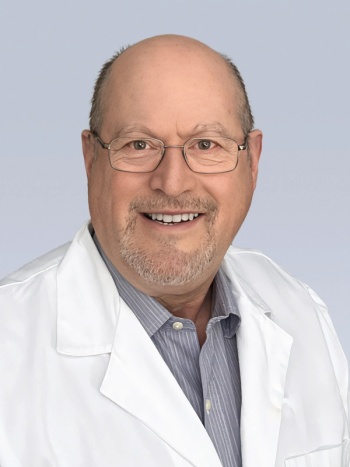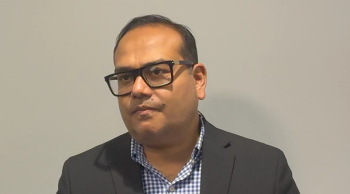
- ONCOLOGY Vol 10 No 8
- Volume 10
- Issue 8
Average Charges for a Radical Prostatectomy and a Transurethral Resection of the Prostate (TURP): Geographic Variations, 1994*
More American men are living longer. An estimated 13,850,000 were over age 65 as of July 1, 1996 [1]. This total represents a 1.01% increase over that in 1995, a 10.3% increase over the 1990 total and more than a 34% increase over the
More American men are living longer. An estimated 13,850,000 wereover age 65 as of July 1, 1996 [1]. This total represents a 1.01%increase over that in 1995, a 10.3% increase over the 1990 totaland more than a 34% increase over the number of these men in 1980[1,2]. By the year 2020 one in every six American men, a projected23.8 million, will be over 65 years old--72% more than in 1996[1].
These population statistics have major social, political, andeconomic ramifications for the health and welfare agencies ofthis country. As the population continues to age, more peoplewill, no doubt, become aware of and demand technologically advancedscreening and treatment modalities to further improve longevityand quality of life. Thus, geriatric health problems are expectedto increasingly consume larger amounts of medical care resources.In addition, the potential for overutilization of screening testswill no doubt increase despite incomplete documentation of therapeuticefficacy and the possible increased identification of clinicallyunimportant conditions [3-7].
Screening for prostate cancer in asymptomatic men and performingprostatectomies are current illustrations of this point. The numberof radical prostatectomies increased more than sixfold between1984 and 1990 and by 141% between 1990 and 1993 [3,4,8]. Thisrise mirrors the trend in US prostate cancer incidence rates,which increased by about 2% each year between 1973 and 1986 andmore than doubled between 1986 and 1992 [9]. This latest increaseaveraged 16% a year and has been attributed in large part to increasedmedical surveillance and more aggressive detection efforts, specificallyto an increased use of
the prostate-specific antigen (PSA) test [4,6,10-11].
Of the prostate cancers diagnosed in 1984, only
5.8% were associated with a PSA test; by 1990, however, this proportionhad increased almost 12 times to
68.4% [12]. Needle biopsies of the prostate are also increasingas an important procedure for detecting prostate cancers [13].
Prostate Cancer Statistics
The American Cancer Society estimates that prostate cancer willaccount for 41.5% of all new cancers in men in 1996, affectingover 317,000 [14]. It has now become the leading cancer diagnosisin men (surpassing lung cancer in 1994) and the second leadingcause of male cancer deaths [9,12-15]. Age-adjusted incidencerates continue to rise, increasing some 65% between 1980 and 1990,with a dramatic 46.2% increase noted between 1989 and 1991 alone[15]. Rates increase with each decade over 50, with more than80% of cases diagnosed in men over age 65. Although there is noknown etiology of this disease, it is thought to be hormone related[16]. There is extraordinary geographic variation in the detectionof and surgery for prostate cancer, indicating lack of consensusabout the efficacy of screening in asymptomatic men and subsequentaggressive treatment of the disease, particularly among the oldersegments of the population [6,7,17-19].
Prostate cancer is usually considered to be a slowly progressingdisease, but in approximately one-third of newly diagnosed cases,the tumor has spread beyond the prostate gland itself [11,12].Early forms of the disease are often discovered during the surgicaltreatment for benign prostatic hyperplasia (BPH). BPH is usuallyseen in men over age 50 who complain of varying degrees of bladderoutlet obstruction. Like prostate cancer, it is of unknown etiologybut may be related to changes in the hormonal balance associatedwith aging [16]. Surgery is the definitive therapy for this condition,and the preferred operation has historically been the transurethralresection of the prostate (TURP). BPH is even more common thanprostate cancer, with histologic evidence apparent by age 60 inmore than half the men at autopsy and in more than 90% by age85 [20]. Its absolute frequency and rate of occurrence have beendecreasing since 1990 at the same time prostate cancers have increased(Fig. A). BPH was diagnosed among 375,000 men in 1993 (the latestdata available), a decrease of 137,000 cases, or 26.8%, from the1983 total. This decrease is reflected in the declining ratesof TURPs that are performed in nonfederal short-stay hospitalsacross this country [8]. In 1983, 321,000 TURPs were performed,whereas in 1993, 250,000 such surgeries were recorded.
Clearly TURPs and radical, or open, prostatectomies have a substantialimpact on the health-care system. First-year costs of treatingthe extra cases of prostate cancer detected through mass screeningshave been estimated to range between $11.9 and $27.9 billion;costs for TURPs, in 1990 alone, were estimated at $2.2 billion[21,22]. Because of such costs, because these procedures continueto be the leading surgeries performed on US men over age 65, andbecause the PSA test and other newer, less invasive screeningtests are growing in popularity, cost-effective screening strategiesand interventions need to be developed [11]. In addition, monitoringthe frequency of and costs associated with open prostatectomiesand TURPs is warranted and gains in importance with the agingof our population. These reasons prompted MetLife researchersto review claims data for these two procedures during 1994 andto investigate the average hospital charges associated with themby state and region.
Metropolitan Life Study
In 1994 MetLife processed close to 342,000 hospital claims fromemployees and dependents of companies covered under group healthpolicy contracts. Of these, 42% were from men, among whom 7.6%(10,796) were 30 years old or older, hospitalized for conditionscoded as Major Diagnostic Category (MDC) 11, "Diseases/disordersof the kidney and urinary tract," or MDC 12, "Diseases/disordersof the male reproductive system." Over 1,000 radical prostatectomypatients were identified from this subset, defined by CPT-4 codes*55810-55815 and 55840-55845. Another 1,600 men had claims fora TURP, defined by CPT-4 code 52601. The TURP patients were substantiallyolder than the prostatectomy group--modal ages of 70 and 64 andmedian ages of 68.7 and 62.4, respectively. Ninety-eight percentof the radical prostatectomy patients were diagnosed with cancerof the prostate; prostatic hyperplasia was the primary diagnosisfor three-quarters of the TURP patients, followed by prostatecancer for 12.6%. Data are presented for all with more than fiveprocedures but discussed and highlighted for those in which 20or more were performed.
Geographic Variation in Charges
for a Radical Prostatectomy
For the 1,004 radical prostatectomies, the average total hospitaland physician charge to Metropolitan Life insurance Company in1994 was just over $18,600. These charges differed by 61%, rangingfrom a high of $20,790 in the Pacific states to a low of $12,910in the East South Central geographic area (Table 1). The Pacificcharge exceeded the US average by 11.3%; the low East South Centralcharge was 31% below the norm. The total charge in the MiddleAtlantic area was the second highest (10.3% above the norm); onlytwo other areas--the South Atlantic and the West South Central--reportedcharges above the average, each just 1% higher. The Mountain areahad the second lowest area total charge ($16,220), more than $4,500below that in the Pacific states and 13% below the norm.
· Between-State Variation--Among the 19 study states, thevariation in radical prostatectomy charges was even wider (FigureB). The highest total charge was reported in Pennsylvania, almost$25,000, 32% above the norm. This total was almost three timesthe lowest charge reported in Tennessee, under $9,000 or 53% belowthe average. Only five other study states (California, Illinois,Florida, Louisiana, and New York) had charges 10% or more abovethe norm. At the other end of the scale, three of the study states(Washington, Michigan, and Oklahoma) reported average total chargesmore than 20% below that for the country as a whole.
· Hospital Charges--The hospital charges accounted for almosttwo-thirds of the total charge to insurance for a radical prostatectomy.Ancillary fees accounted for 63% of this total, averaging $7,720across the country. The room and board normative charges were$4,510 and ranged from $8,010 in California (78% above the norm)to $1,080 in Tennessee (76% below the norm). Room and board chargessimilarly high to those in California were evident in Pennsylvaniaand Florida, 75% and 64% above the average, respectively.
· Physician Charges--Physician charges accounted for aboutone-third of the total radical prostatectomy bill in 1994, averaging$6,450. This total differed by as much as 114% between the feesin New York ($8,710--35% above average) and those in Tennessee($4,080--37% below the US norm). The physicians' charge in Pennsylvania($7,560) was the second highest of the study states and averaged17% above the norm. Washington reported the second lowest charge,$4,390--32% below the average; the Colorado and Michigan doctors'fees each averaged 20% or more below the national norm.
· Length of Stay--On average, radical prostatectomy patientsremained in the hospital just under 6 days. These hospitalizationsdiffered by almost 3 days; New York patients' stay was 7.02 days,whereas in Missouri, it averaged 4.42 days. These stays were 26%above and 21% below the average, respectively.
Transurethral Resection
of the Prostate (TURP) Charges
Total hospital and physician charges for the 1,597 TURPs performedin 1994 averaged $7,600 (Table 2). The pattern of these chargesdiffered somewhat from that for radical prostatectomies. Whilethe average in the East South Central area was the lowest in thecountry (as with the radical surgeries), the highest average wasrecorded in the South Atlantic area followed by the Pacific (14.6%and 13.9%, respectively, above the norm).
By state the average totals differed by 95% (Figure C). The NorthCarolina total was the highest (31% above the US total) and thatin Washington, the lowest (33% below). Georgia, California, andIllinois were the only other states with totals 20% or greaterabove the average, each over $9,500. Tennessee and Ohio had equallylow charges (30% below the norm), followed closely by the averagein Alabama and Oregon (28% and 25%, respectively, below the USaverage).
· Hospital Charges--As with radical prostatectomies, overtwo-thirds of the average total TURP charges were attributed tothe hospital part of the bill. These charges averaged $5,160,with the proportion of the total costs ranging from 74% in Arizonato 59% in Ohio. Total hospital charges varied by 132% betweenthose in North Carolina ($7,290) and Ohio ($3,140).
Ancillary fees made up 62% of the hospital bill, with substantialvariation evident between states. These fees accounted for justunder half of the hospital charges in California to 80% in Alabama.Ancillary fees were the highest in Georgia, 62% above the norm,and the lowest in Ohio (36% below the average).
Room and board charges varied even more, ranging from a high of$3,540 in California (80% above average) to lows under $1,000in Washington, Wisconsin, and Alabama (more than 50% below thenorm).
· Physician Charges--As with the radical prostatectomy procedures,the physician charge was just under one-third of the total TURPbill. The national average was $2,440 and differed by 95% betweenstates. Again, the New York doctors' charges were the highest(33% above the US average), but those in Michigan were the lowest(32% below the norm). The physician charges in the three EastCoast geographic areas were the highest of all nine, ranging from$2,670 in the South Atlantic to $2,830 in the New England states.
· Length of Stay--The average hospital stay for a TURP in1994 was 3.66 days. Patients in Indiana remained
in the hospital the longest (5.58 days), followed by
New York and New Jersey (4.90 and 4.24 days, respectively). Incontrast, TURP patients stayed in the hospital for an averageof 2.29 days in Oregon and 2.49 days in Colorado.
Discussion
The differences in charges for and distribution of prostatectomiesand TURPs are consistent with earlier SB [Statistical Bulletin]analyses. The causes for the noted variations continue to be perplexingbut may reflect the fairly widespread confusion and debate surroundingthe optimal approach to the early detection and management ofprostate diseases. Because prostate cancer and BPH generally affectolder men, many of whom are expected to die of unrelated diseases,the decision to pursue aggressive medical or surgical therapyor a regimen of watchful waiting remains controversial [23-25].Although consensus is lacking, some argue that there may be a"cultural component" to the choice of treatment thatpromotes early and aggressive treatment [24]. Regardless of thereason, randomized clinical trials or the further refinement ofpredictive tumor markers or host features would benefit all andhelp make the treatment/screening decision easier. While the debatecontinues over the efficacy of surgery for early prostate cancerand the influence of screening tests on incidence as well as mortality,monitoring of outcomes by various treatment regimens is also necessary.These goals gain in importance given the increasing numbers ofolder-aged men in this country and the need to control risinghealth-care expenditures.
References:
1. Day JC: Population projections of the United States by age,sex, race and Hispanic origin: 1995 to 2050. Current PopulationReports. P25-1130. Washington, DC, US. Government Printing Office,1996.
2. US Bureau of the Census: Statistical Abstract of the UnitedStates: 1995, 115th ed. Washington, DC, US Department of Commerce,1995.
3. Lu-Yao GL, McLerran D, Wasson JH, et al: An assessment of radicalprostatectomy: Time trends, geographic variation, and outcomes.JAMA 269(20):2633-2636, 1993.
4. Krahn MD, Mahoney JE, Eckman MH, et al: Screening for prostatecancer: A decision analytic view. JAMA 272(10):773-780, 1994.
5. Stephenson RA, Smart CR, Mineau GP, et al: The fall in incidenceof prostate carcinoma. Cancer 77(7):1342-1348, 1996.
6. Catalona WJ, Smirk DS, Ratliff TL, et al: Detection of organ-confinedprostate cancer is increased through prostate-specific antigen-basedscreening. JAMA 270(8):948-954, 1993.
7. Hammerer P, Loy V, Dieringer J, Huland H: Prostate cancer innonurological patients with normal prostates in digital rectalexamination. J Urol 147:833-836, 1992.
8. Graves EJ: Diagnoses and procedures: National Hospital Survey.Vital and Health Statistics, series 13 (113),(115), (118), (122).Hyattsville, Maryland, National Center for Health, 1992, 1993,1994, 1995.
9. Ries LAG, Miller BA, Hankey BF, et al:(Eds.). SEER Cancer StatisticsReview: 1973-1992. NIH Pub. No. 95-2789. Bethesda, Maryland, NationalCancer Institute, 1995.
10. Stamey, TA: Editorial. Diagnosis of prostate cancer: A personalview. J Urol 147:830-832, 1992.
11. Gann PH, Hennekens CH, Stampfer MJ: A prospective evaluationof plasma prostate-specific antigen for detection of prostaticcancer. JAMA 273(4):289-294, 1995.
12. Mettlin C, Jones GW, Murphy GP: Trends in prostate cancercare in the United States, 1974-1990: Observations from the patientcare evaluation studies of the American College of Surgeons Commissionon Cancer. CA Cancer J Clin 43(2):83-91, 1993.
13. Potosky AL, Miller BA, Albertsen PC, et al: The role of increasingdetection in the rising incidence of prostate cancer. JAMA 273(7):548-552,1995.
14. Parker SL, Tong T, Bolden S, et al: Cancer statistics, 1996.
CA Cancer J Clin 46(1):5-28, 1996.
15. Epidemiology and Surveillance Department: Cancer Facts &Figures 1996. Atlanta, American Cancer Society, 1996.
16. Berkow R, Fletcher AJ(eds): The Merck Manual of Diagnosisand Therapy. Fifteenth Edition. Rahway, New Jersey, Merck Sharp& Dohme Research Laboratories, 1987.
17. Lu-Yao GL, Greenberg ER: Changes in prostate cancer incidenceand treatment in USA. Lancet 343(8892):251-254, 1994.
18. Black WC, Welch HG: Advances in diagnostic imaging and overestimationsof disease prevalence and the benefits of therapy. N Engl J Med328(17):1237-1243, 1993.
19. Johansson JE, Adami H0, Andersson S0, et al: High 10-yearsurvival rate in patients with early, untreated prostatic cancer.JAMA 267(16):2191-2196, 1992.
20. Jacobsen SJ, Girman CJ, Guess HA, et al: New diagnostic andtreatment guidelines for benign prostatic by perplasia. Arch InternMed 155:477-481, 1995.
21. Kramer BS, Brown ML, Prorok PC, et al: Prostate cancer screening:What we know and what we need to know. Ann Intern Med 119(9):914-923,1993.
22. Weis KA, Epstein RS, Huse DM, et al: The costs of prostatectomyfor benign prostatic hyperplasia. Prostate 22:325-334, 1993.
23. Fleming C, Wasson JH, Albertsen PC, et al: A decision analysisof alternative treatment strategies for clinically localized prostatecancer. JAMA 269(20):2650-2658, 1993.
24. Whitmore WF, Jr.: Editorial: Management of clinically localizedprostatic cancer--An unresolved problem. JAMA 269(20):2676-2677,1993.
25. Chodak GW, Thisted RA, Gerber GS, et al: Results of conservativemanagement of clinically localized prostate cancer. N Engl J Med330(4):242-248, 1994.
Articles in this issue
over 29 years ago
Deadly Human Parasite Discoveredover 29 years ago
National Program of Cancer Registriesover 29 years ago
Gut Reaction: New Locale for Antibody ActivityNewsletter
Stay up to date on recent advances in the multidisciplinary approach to cancer.



















































































